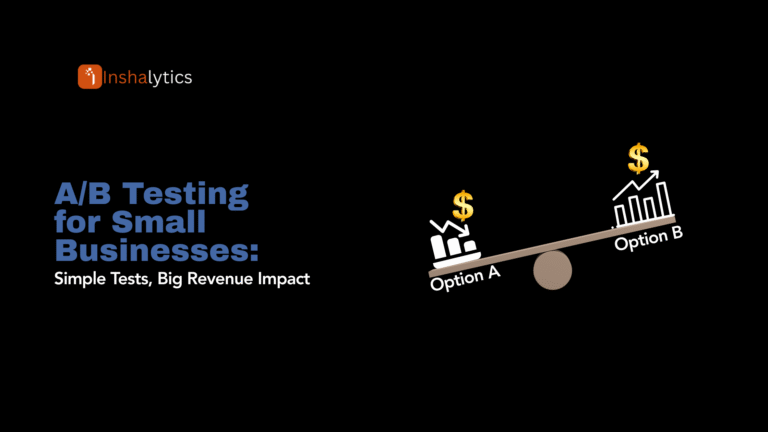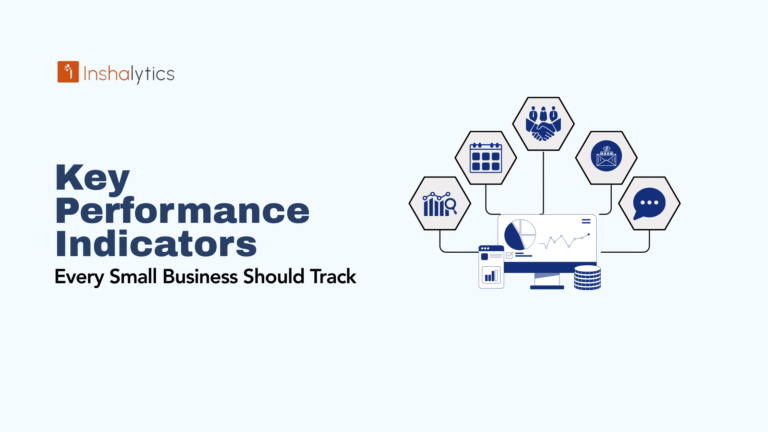Running a small business without regular financial reporting is like driving blindfolded down a highway. You might survive for a while, but you’re bound to crash eventually. While larger corporations can afford to review their finances quarterly, small businesses need the agility that comes from monthly financial insights.
Monthly financial reporting provides immediate feedback on your pricing strategies, marketing promotions, employee productivity, and overall growth trajectory. This real-time visibility enables you to make informed decisions about major purchases, debt management, and expansion opportunities before small problems become business-threatening crises. It also highlights which the financial statements a small business should monitor monthly to maintain financial health and stability.
Consider this: 59% of small businesses report being in fair or poor financial condition, and 85% have experienced significant financial difficulties. The businesses that thrive are those that maintain consistent monthly reporting routines, allowing them to spot trends, identify opportunities, and course-correct quickly when needed.
Monthly reporting also builds credibility with lenders, investors, and stakeholders. When you can present consistent, accurate financial data, you demonstrate professional financial management that opens doors to funding and partnership opportunities.
The 3 Core Financial Reports You Must Review Monthly
These three fundamental financial statements form the backbone of your business intelligence. Master these monthly financial reports, and you’ll have a clear picture of your company’s financial health at any given moment.
Profit & Loss Statement (Income Statement): Your Business Profitability Snapshot
Your Profit & Loss statement (P&L) is arguably the most important report you’ll review each month. It shows exactly how much revenue you generated, what expenses you incurred, and whether you made a profit or suffered a loss during a specific period.
Key Components to Monitor:
- Total Revenue: All income from sales, services, and other business activities
- Cost of Goods Sold (COGS): Direct costs associated with producing your products or services
- Gross Profit: Revenue minus COGS, showing your fundamental profitability
- Operating Expenses: Overhead costs like rent, salaries, marketing, and utilities
- Net Income: Your bottom line after all expenses are deducted
What to Look For: Compare your current month’s P&L against previous months and the same period last year. Watch for expense categories growing faster than revenue this often signals areas where costs are spiraling out of control. If your COGS is increasing while sales remain flat, you may need to raise prices or find ways to reduce production costs.
Action Items:
- Identify your highest-margin products or services and focus marketing efforts there
- Spot expense categories that are consuming disproportionate resources
- Track whether seasonal trends are performing as expected
- Calculate key ratios like gross margin percentage and operating margin
Balance Sheet: Understanding Your Financial Position
While your P&L shows performance over time, your balance sheet provides a snapshot of your company’s financial position at a specific moment. It lists everything your business owns (assets), everything it owes (liabilities), and your ownership equity.
Essential Elements:
- Current Assets: Cash, accounts receivable, inventory, and other assets convertible to cash within one year
- Fixed Assets: Equipment, property, vehicles, and other long-term assets
- Current Liabilities: Accounts payable, short-term debt, and obligations due within one year
- Long-term Liabilities: Mortgages, long-term loans, and other debts due beyond one year
- Owner’s Equity: The difference between total assets and total liabilities
Critical Ratios to Calculate:
- Current Ratio: Current assets divided by current liabilities (aim for at least 1.5)
- Quick Ratio: Liquid assets divided by current liabilities (should exceed 1.0)
- Debt-to-Equity Ratio: Total liabilities divided by owner’s equity
Monthly Review Focus: Compare month-to-month changes in your cash position, accounts receivable levels, and debt obligations. Increasing accounts receivable might indicate collection problems, while declining cash reserves could signal cash flow challenges ahead.
Cash Flow Statement: Tracking Money In and Money Out
Your cash flow statement reveals the actual movement of money through your business, breaking it down into three categories: operating activities, investing activities, and financing activities. This report is crucial because a profitable business can still fail due to poor cash flow management.
Three Key Sections:
- Operating Cash Flow: Money generated from core business operations
- Investing Cash Flow: Cash used for or generated from asset purchases and sales
- Financing Cash Flow: Money from loans, equity investments, or debt payments
Warning Signs to Watch:
- Consistently negative operating cash flow despite showing profits on your P&L
- Large gaps between net income and cash from operations
- Declining cash reserves month over month
- Increasing dependence on financing activities to maintain cash flow
Monthly Analysis: Review your cash conversion cycle how long it takes to turn inventory and receivables into actual cash. Look for trends in payment collection times and identify opportunities to accelerate cash inflows or delay outflows without damaging relationships.
4 Additional Monthly Reports for Complete Financial Visibility
Beyond the core three statements, these additional reports provide deeper insights into specific areas of your business that directly impact your bottom line.
Accounts Receivable & Accounts Payable Reports
Your AR and AP reports tell the story of money owed to you and money you owe others. These reports are essential for cash flow management and maintaining healthy business relationships.
Accounts Receivable Insights:
- Track average collection periods for customer payments
- Identify customers consistently paying late
- Calculate bad debt percentages and adjust collection procedures
- Monitor seasonal payment patterns
Accounts Payable Management:
- Ensure you’re taking advantage of early payment discounts
- Avoid late payment fees and damaged supplier relationships
- Optimize cash flow by timing payments strategically
- Track which vendors offer the most favorable payment terms
Best Practices: Review aged receivables monthly and implement collection procedures for accounts over 30 days. For payables, maintain a calendar of payment due dates and prioritize payments based on vendor importance and available discounts.
Key Financial Ratios and Metrics
Financial ratios transform raw numbers into actionable insights by providing context and benchmarks for performance evaluation.
Profitability Ratios:
- Gross Profit Margin: (Revenue – COGS) ÷ Revenue
- Net Profit Margin: Net Income ÷ Revenue
- Return on Assets: Net Income ÷ Total Assets
Liquidity Ratios:
- Current Ratio: Current Assets ÷ Current Liabilities
- Quick Ratio: (Current Assets – Inventory) ÷ Current Liabilities
- Cash Ratio: Cash ÷ Current Liabilities
Efficiency Ratios:
- Inventory Turnover: COGS ÷ Average Inventory
- Receivables Turnover: Net Credit Sales ÷ Average Accounts Receivable
- Asset Turnover: Revenue ÷ Average Total Assets
Monthly Ratio Review: Compare your ratios against industry benchmarks and your historical performance. Declining profitability ratios might indicate pricing pressure or cost inflation, while improving efficiency ratios suggests better operational management.
Budget vs. Actual Performance Report
This report compares your actual monthly performance against your budgeted expectations, highlighting areas where you’re exceeding or falling short of projections.
Key Analysis Points:
- Revenue variances: Are you meeting sales targets?
- Expense variances: Which costs are over or under budget?
- Seasonal adjustments: Do budget assumptions align with actual seasonal patterns?
- Year-to-date performance: Are you on track to meet annual goals?
Variance Analysis Process: Calculate both dollar and percentage variances for major line items. Investigate any variance greater than 10% or $1,000 (adjust thresholds based on your business size). Document reasons for significant variances and adjust future budgets based on new information.
Customer Acquisition Cost and Retention Metrics
Understanding the cost of acquiring customers and your ability to retain them is crucial for sustainable growth.
Key Customer Metrics:
- Customer Acquisition Cost (CAC): Total marketing and sales costs ÷ Number of new customers acquired
- Customer Lifetime Value (CLV): Average purchase value × Purchase frequency × Customer lifespan
- Customer Retention Rate: ((Customers at end of period – New customers) ÷ Customers at start of period) × 100
- Churn Rate: Customers lost ÷ Total customers at start of period
Monthly Tracking: Monitor trends in acquisition costs and retention rates. A healthy business typically maintains a CLV: CAC ratio of at least 3:1, meaning customers generate three times more value than they cost to acquire.
How to Create an Effective Monthly Financial Reporting Process?
Establishing a systematic approach to monthly financial reporting ensures consistency, accuracy, and timely insights for decision-making.
Setting Up Your Monthly Reporting Schedule
Week 1 After Month-End:
- Reconcile all bank accounts and credit card statements
- Review and categorize all transactions
- Update accounts receivable and payable records
- Reconcile inventory counts (if applicable)
Week 2:
- Generate preliminary financial statements
- Calculate key financial ratios and metrics
- Prepare variance analyses against the budget
- Compile customer and operational metrics
Week 3:
- Review and analyze all reports for accuracy
- Identify trends, opportunities, and concerns
- Prepare management summary and recommendations
- Schedule review meetings with key stakeholders
Week 4:
- Finalize and distribute reports to relevant parties
- Update forecasts and budgets based on new information
- Implement immediate action items identified during analysis
- Begin preliminary work for next month’s reporting
Essential Tools and Software for Financial Reporting
Accounting Software Options:
- QuickBooks: Ideal for small businesses with basic to moderate complexity
- Xero: Cloud-based solution with strong integration capabilities
- FreshBooks: Best for service-based businesses and freelancers
- Sage: Suitable for businesses requiring more advanced features
Reporting Enhancement Tools:
- Excel or Google Sheets: For custom analysis and dashboard creation
- Tableau or Power BI: For advanced data visualization
- Fathom or LivePlan: For automated financial analysis and benchmarking
Key Software Features to Prioritize:
- Automated bank reconciliation
- Customizable reporting templates
- Multi-user access with permission controls
- Integration with other business systems
- Cloud-based accessibility for remote work
What to Look for When Analyzing Your Reports?
Trend Analysis: Look beyond single-month performance to identify patterns over 3, 6, and 12-month periods. Are revenues growing consistently? Are expense ratios improving or deteriorating?
Comparative Analysis: Compare your performance against:
- Previous months and years
- Budget and forecast expectations
- Industry benchmarks and competitors
- Economic and seasonal trends
Exception Reporting: Focus attention on significant variances, unusual transactions, or metrics outside normal ranges. Develop triggers for when certain ratios or amounts require immediate investigation.
Forward-Looking Indicators: Identify metrics that predict future performance, such as:
- New customer acquisition rates
- Pipeline conversion rates
- Employee productivity trends
- Market share changes
Using Your Financial Reports to Make Strategic Business Decisions
Financial reports are only valuable if they drive informed decision-making. Here’s how to translate numbers into actionable business strategies.
Identifying Trends and Red Flags
Revenue Trends to Monitor:
- Declining gross margins may indicate pricing pressure or rising costs
- Seasonal revenue patterns help with cash flow planning and inventory management
- Customer concentration risks become apparent when one client represents too much revenue
Expense Red Flags:
- Operating expenses are growing faster than revenue
- Sudden spikes in specific cost categories
- Declining efficiency ratios indicate operational problems
Cash Flow Warning Signs:
- Lengthening accounts receivable collection periods
- Increasing reliance on external financing for operations
- Declining cash reserves despite profitable operations
Operational Indicators:
- Rising customer acquisition costs
- Declining customer retention rates
- Inventory turnover is slowing down
Making Data-Driven Decisions for Growth
Pricing Optimization: Use gross margin analysis to identify products or services with pricing power. If demand remains strong despite price increases, you may have room for additional margin improvement.
Cost Management: Identify expense categories consuming disproportionate resources. Consider whether high-cost activities are generating proportional returns, and reallocate resources to higher-impact areas.
Investment Decisions: Use return on assets and cash flow projections to evaluate potential equipment purchases, facility expansions, or marketing investments. Ensure any investment can generate returns exceeding your cost of capital.
Growth Strategies: Analyze which products, services, or customer segments generate the highest margins and focus expansion efforts accordingly. Use customer lifetime value calculations to guide marketing budget allocation.
When to Seek Professional Help?
Consider Professional Assistance When:
- Financial reports consistently show conflicting information
- You lack the time or expertise to perform a thorough analysis
- Your business is experiencing rapid growth or significant changes
- You’re preparing for financing, investment, or sale opportunities
- Tax planning requires sophisticated strategies
Types of Professional Support:
- Bookkeepers: Handle transaction recording and basic report generation
- Staff Accountants: Provide more complex accounting and analysis capabilities
- CPAs: Offer tax planning, audit services, and strategic financial advice
- Financial Consultants: Provide specialized expertise in areas like cash flow management or financial modeling
Selecting the Right Professional: Look for professionals with experience in your industry who can provide references from similar businesses. Ensure they use compatible technology and can deliver reports in formats that meet your needs.
Take Control of Your Business Finances Starting This Month
Monthly financial reporting isn’t just about compliance or record-keeping—it’s about gaining the insights necessary to build a thriving, sustainable business. The most successful small business owners are those who understand their numbers intimately and use that knowledge to make informed decisions quickly.
Your Next Steps:
- Immediate Action: Review your last three months of financial statements and identify the most significant trends or concerns
- System Setup: Implement or upgrade your accounting software and establish monthly reporting deadlines
- Analysis Training: Invest time in learning how to interpret financial ratios and trend analysis
- Professional Network: Identify accounting professionals who can support your reporting and analysis needs
Remember: Perfect reporting isn’t the goal consistent, timely, and actionable reporting is what drives business success. Start with the core three reports, establish a monthly routine, and gradually add more sophisticated analysis as your business grows and your financial management skills develop.
The businesses that survive and thrive are those that treat financial reporting as a strategic advantage, not an administrative burden. Make this month the starting point for taking complete control of your business finances your future self will thank you for the clarity and confidence that comes from truly understanding your numbers.
Key Takeaway: Monthly financial reporting transforms overwhelming business complexity into clear, actionable insights. By consistently reviewing these essential reports, you’ll move from reactive financial management to proactive business strategy, positioning your company for sustainable growth and long-term success.




